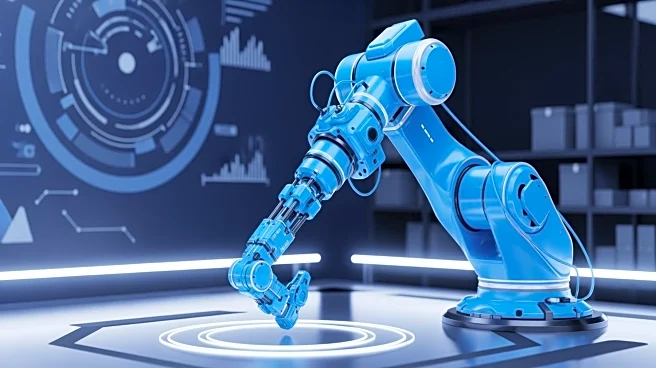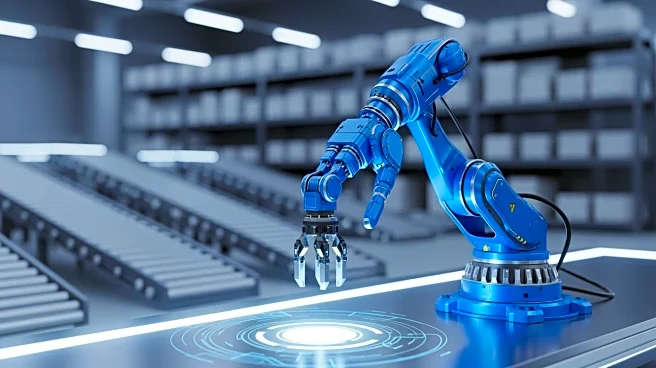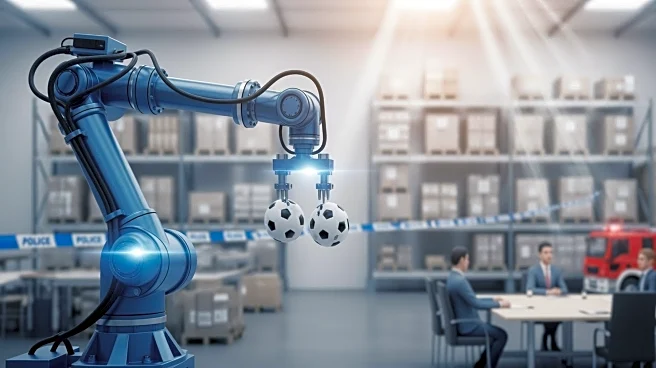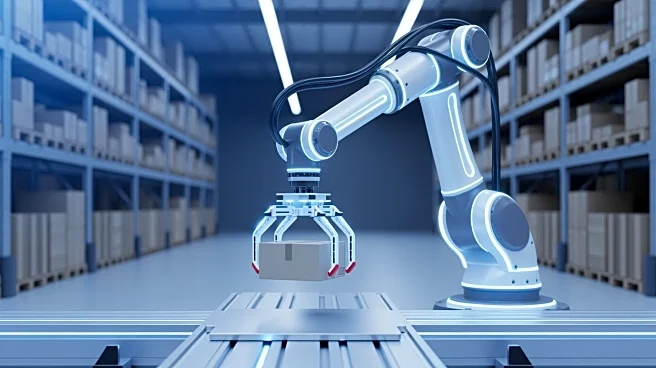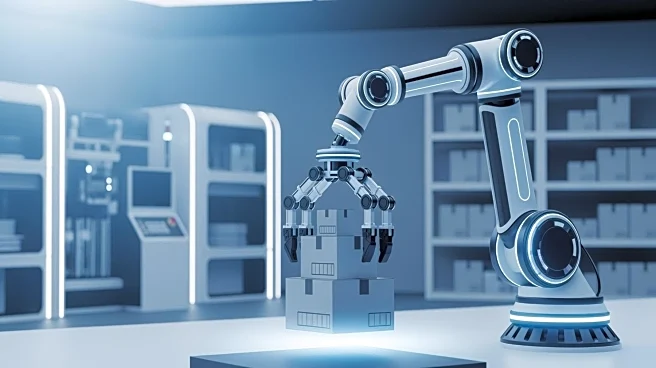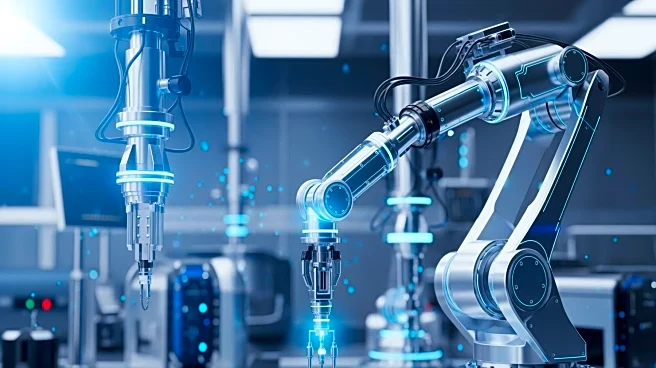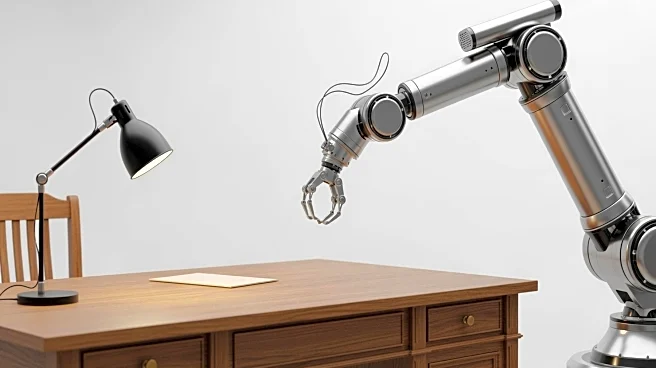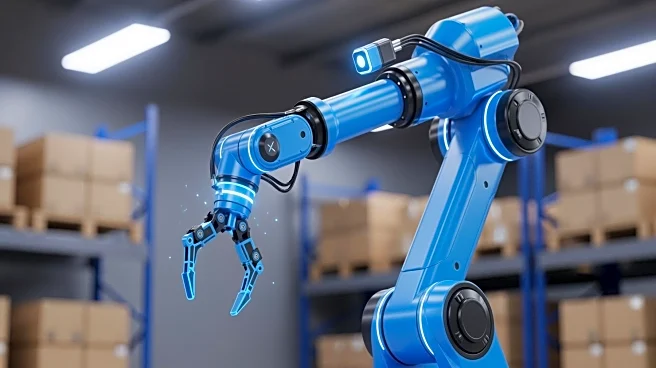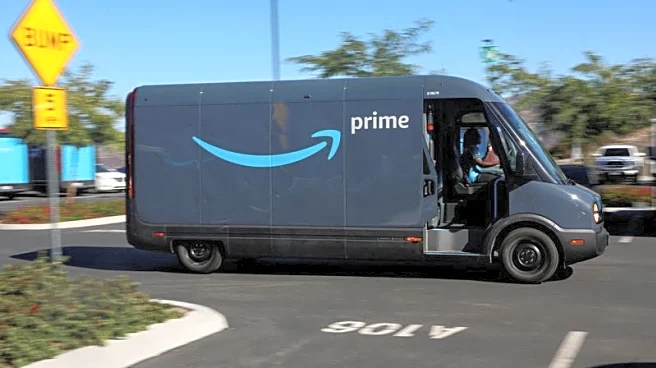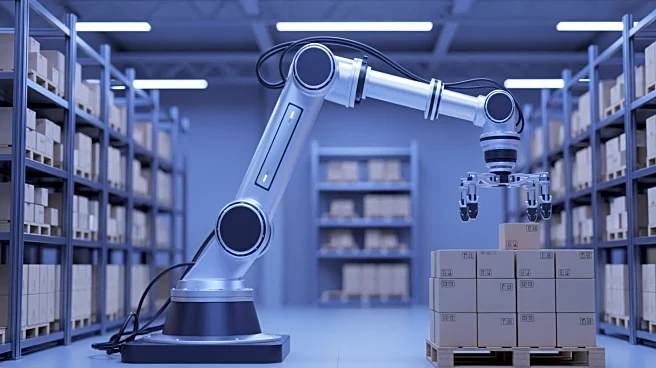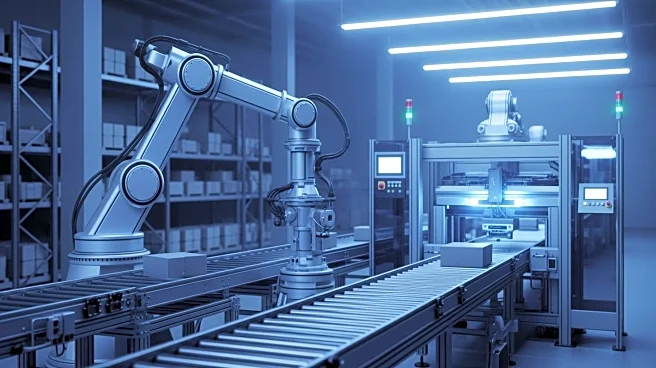What's Happening?
Amazon has introduced the Blue Jay robot, designed to improve efficiency and safety in its fulfillment centers. The robot combines multiple operations into a single system, performing picking, stowing,
and consolidating tasks simultaneously. Blue Jay's development was accelerated through the use of digital twins and AI, reducing the time from concept to production. The robot is being tested in South Carolina, where it aims to enhance workflows and support front-line employees by reducing repetitive physical tasks.
Why It's Important?
The introduction of the Blue Jay robot by Amazon represents a significant advancement in warehouse automation, offering new capabilities for improving efficiency and safety. The robot's ability to perform multiple tasks simultaneously can reduce costs, increase speed, and enhance service reliability. The development highlights the growing role of AI and robotics in transforming traditional industries, creating new business opportunities and driving innovation. Amazon's approach could lead to broader adoption of robotic technologies in logistics, reshaping the industry's landscape.
What's Next?
Amazon may continue to refine the Blue Jay robot's systems and explore additional applications for warehouse automation. The company may also expand its use of digital twins and AI to accelerate the development of new technologies. The initiative could lead to increased investment in robotics and infrastructure, driving growth in the logistics sector. The development may also prompt regulatory bodies to establish guidelines for robotic operations in warehouses, ensuring safety and compliance.
